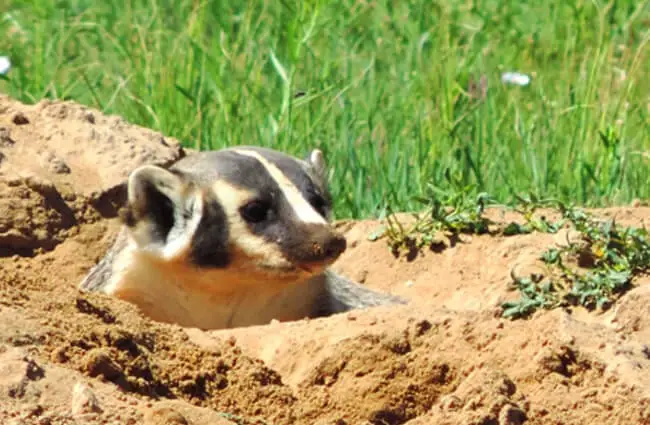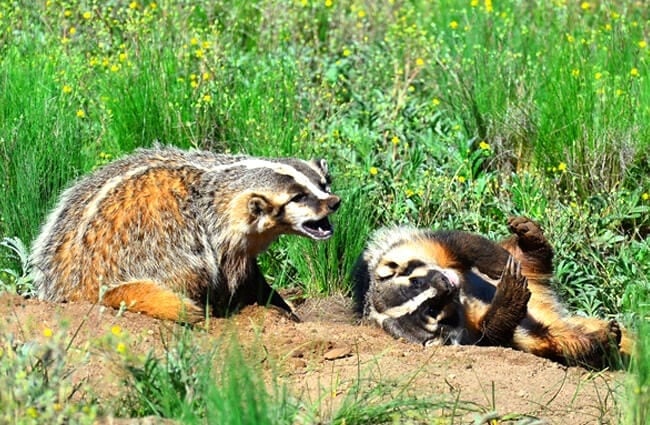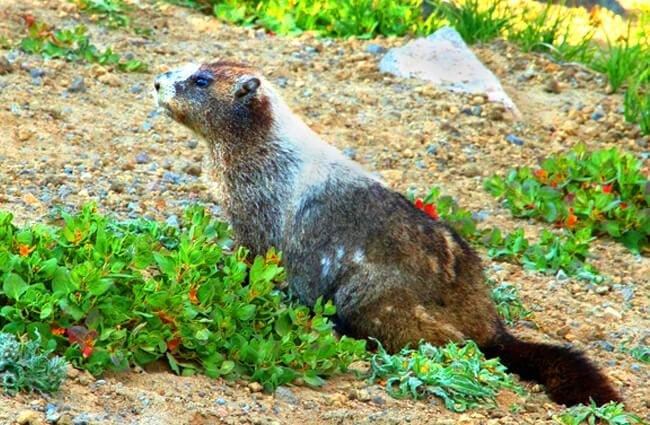The Enigmatic Badger A Comprehensive Guide
Badgers, those striped and stocky creatures, evoke a sense of wildness and mystery. Often glimpsed fleetingly as they forage or retreat to their underground homes, they are a vital yet often overlooked component of many ecosystems. This guide delves into the fascinating world of badgers, exploring their biology, behavior, habitat, and their complex relationship with both the natural world and humankind.

What is a Badger
The term “badger” doesn’t refer to a single species, but rather to a group of mammals belonging to the family Mustelidae, which also includes weasels, otters, and wolverines. There are several species of badgers found across the globe, but this guide will primarily focus on the European badger Meles meles and the North American badger Taxidea taxus, as they are the most well‑studied.
Badgers are characterized by their robust build, short legs, and distinctive facial markings. The European badger boasts striking black and white stripes on its face, while the North American badger typically has a white stripe that runs along its back. Both species possess powerful claws adapted for digging, a crucial skill for their lifestyle.
Habitat and Distribution
Badgers are remarkably adaptable creatures, inhabiting a wide range of environments. European badgers are found throughout much of Europe and parts of western Asia. They thrive in woodlands, grasslands, hedgerows, and farmland where suitable soil allows them to dig extensive underground tunnel systems. North American badgers occupy grasslands, prairies, and open woodlands across western and central North America. Their habitat selection is heavily influenced by the availability of prey and suitable digging conditions; they prefer areas with softer, loamy soils.

Diet and Foraging Behavior
Badgers are omnivorous, meaning their diet consists of both plants and animals. European badgers have a more varied diet than their North American counterparts. They consume earthworms, insects, small mammals, roots, fruits, and occasionally carrion. North American badgers are primarily carnivores, specializing in hunting ground squirrels, prairie dogs, and other rodents. They are known for their tenacious pursuit of prey, often digging them out of their burrows. Both species are opportunistic feeders, taking advantage of whatever food sources are readily available.
Badgers are crepuscular, meaning they are most active during dawn and dusk. They forage across a home range, which can vary in size depending on the availability of food and the population density. They use a keen sense of smell to locate prey, even beneath the surface of the ground.
Social Structure and Reproduction
European badgers live in social groups called clans, which consist of related individuals. Clans share a sett and cooperate in raising their young. The dominant female, known as the matriarch, typically leads the clan. North American badgers are generally solitary animals, except during the breeding season.
Badgers typically breed in late winter or early spring. European badger clans have a complex mating system, with multiple males competing for access to females. North American badgers exhibit a more straightforward mating system, with males seeking out females in their territories. After a period of delayed implantation, females give birth to litters of two to five cubs in underground chambers within the sett. Cubs are highly dependent on their mothers for the first few months of life, relying on milk and parental care. They gradually learn to forage and hunt, eventually dispersing to establish their own territories.

Ecological Role and Interactions
Badgers play a crucial role in maintaining the health of ecosystems. Their digging activities help aerate the soil and promote plant growth. They also contribute to pest control by consuming insects and rodents. Badger setts provide shelter for other animals, including rabbits, foxes, and birds. They are sometimes considered keystone species, meaning their presence has a disproportionately large impact on the ecosystem.
Badgers interact with a variety of other animals. They sometimes compete with foxes and other predators for food and territory. They can also be preyed upon by larger predators, such as wolves and bears, although this is relatively uncommon.
Badgers and Humans A Historical and Cultural Perspective
Throughout history, badgers have held a prominent place in human culture and folklore. In some cultures, they are revered as symbols of courage, resilience, and cunning. They appear in myths, legends, and stories across Europe, Asia, and North America. Badgers were hunted for their meat, fur, and oil. While hunting is now regulated in many areas, badgers continue to be persecuted in some regions due to perceived conflicts with agriculture or livestock.
In modern times, badgers have become a symbol of wildlife conservation. They are protected under various laws and regulations, and efforts are underway to preserve their habitats and populations.

Encountering Badgers in the Wild
Seeing a badger in the wild is a special experience. They are most active during dusk and dawn, so these are the best times to look for them. Look for signs of their presence, such as setts, tracks, and foraging holes. If you encounter a badger, observe it from a distance. Do not approach it or attempt to interact with it. Badgers are generally shy and will avoid humans if possible. If you feel threatened by a badger, slowly back away and give it space.
If you are hiking in badger country, be mindful of setts and avoid disturbing them. Keep dogs under control, as they may chase or harass badgers. Report any injured or distressed badgers to a local wildlife rescue organization.
Badgers in Captivity Care and Considerations
Caring for badgers in captivity requires a deep understanding of their natural behaviors and needs. They require spacious enclosures that mimic their natural habitat, with opportunities for digging, foraging, and exploring. The enclosure should include a sheltered den for resting and sleeping. A varied diet consisting of meat, vegetables, fruits, and insects is essential. Badgers are intelligent and require enrichment activities to prevent boredom and stimulate their minds. These can include puzzle feeders, digging pits, and novel objects to investigate.
Badgers can be challenging to manage in captivity, as they are strong, independent, and potentially aggressive. Zookeepers must prioritize safety and provide adequate training and handling protocols. It is also crucial to minimize human contact and allow badgers to express their natural behaviors. Captive breeding programs can play an important role in conserving badger populations, but careful genetic management is essential.

Evolutionary History and Taxonomy
The evolutionary history of badgers is complex, tracing back to the Mustelidae family, which originated during the Oligocene epoch. The earliest badger-like ancestors likely emerged during the Pliocene, diversifying into the various species we see today. Genetic studies reveal a close relationship between European and Asian badger species, suggesting a common origin. The North American badger, while distinct, shares a more distant common ancestor.
The taxonomy of badgers has been revised over time. Traditionally, all badger species were grouped into the genus Meles. However, modern genetic analyses have led to the recognition of several distinct genera, including Taxidea (North American badger) and Ursus (American badger). This reclassification reflects differences in morphology, genetics, and geographic distribution.
Interesting Facts About Badgers
- Badger setts can be incredibly complex, with multiple entrances, chambers, and tunnels. Some setts have been occupied for generations.
- Badger cubs are born blind and deaf, relying entirely on their mothers for care.
- The scientific name Meles meles means “mottled badger” in Latin, referring to the badger’s distinctive facial markings.
- Badgers are known to use a keen sense of hearing to detect prey even underground, making them highly effective predators in their environment.
- Badger populations play a vital role in controlling rodent populations, which can benefit agricultural communities by reducing crop damage.
Badgers remain a captivating and essential part of the natural world. By understanding their biology, behavior, and ecological role, we can ensure their survival for generations to come. From their intricate social structures to their tenacious foraging habits, badgers offer a window into the wonders of the wild.

![Red Angus Closeup of a beautiful Red Angus cowPhoto by: U.S. Department of Agriculture [pubic domain]https://creativecommons.org/licenses/by/2.0/](https://animals.net/wp-content/uploads/2020/03/Red-Angus-4-238x178.jpg)




![Red Angus Closeup of a beautiful Red Angus cowPhoto by: U.S. Department of Agriculture [pubic domain]https://creativecommons.org/licenses/by/2.0/](https://animals.net/wp-content/uploads/2020/03/Red-Angus-4-100x75.jpg)

